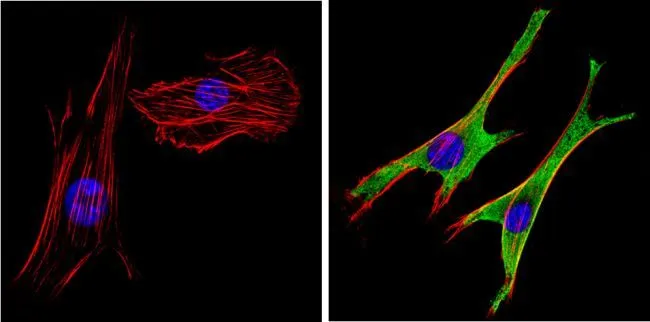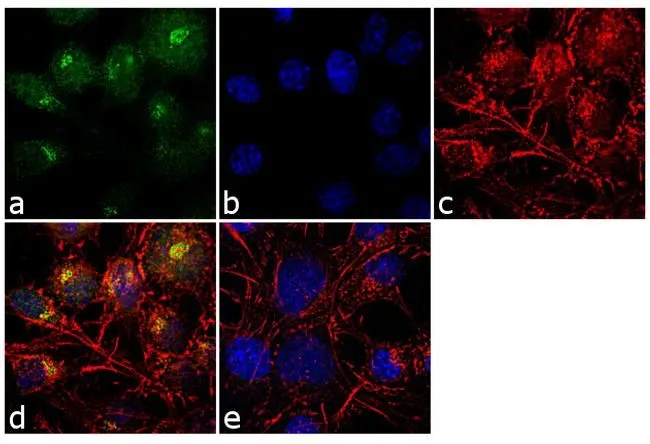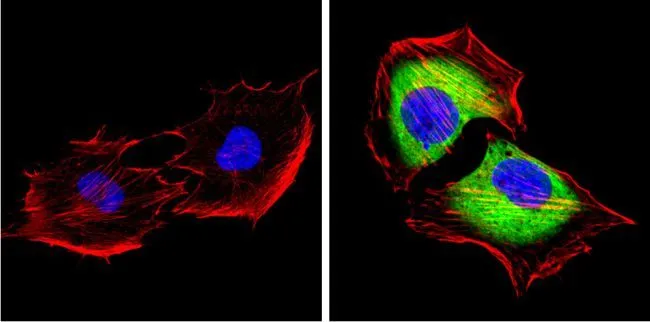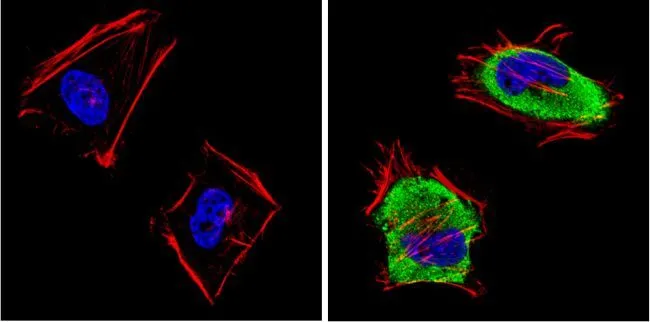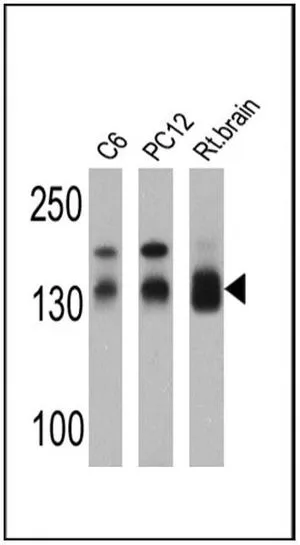
WB analysis of 25 ug of C6 (lane 1), PC12 (lane 2) and rat brain (lane 3) cell lysates using GTX23437 SAP97 antibody. Dilution : 1:5000
SAP97 antibody
GTX23437
ApplicationsImmunoFluorescence, ImmunoPrecipitation, Western Blot, ImmunoCytoChemistry, ImmunoHistoChemistry, ImmunoHistoChemistry Frozen
Product group Antibodies
ReactivityHuman, Mouse, Rat
TargetDlg1
Overview
- SupplierGeneTex
- Product NameSAP97 antibody
- Delivery Days Customer9
- Application Supplier NoteWB: 1:500-1:5000. ICC/IF: 1:250. IHC-Fr: 1:1,000. *Optimal dilutions/concentrations should be determined by the researcher.Not tested in other applications.
- ApplicationsImmunoFluorescence, ImmunoPrecipitation, Western Blot, ImmunoCytoChemistry, ImmunoHistoChemistry, ImmunoHistoChemistry Frozen
- CertificationResearch Use Only
- ClonalityPolyclonal
- ConjugateUnconjugated
- Gene ID13383
- Target nameDlg1
- Target descriptiondiscs large MAGUK scaffold protein 1
- Target synonymsB130052P05Rik, Dlgh1, E-dlg/SAP97, SAP-97, SAP97, mKIAA4187, disks large homolog 1, discs, large homolog 1, embryo-dlg/synapse-associated protein 97
- HostRabbit
- IsotypeIgG
- Protein IDQ811D0
- Protein NameDisks large homolog 1
- Scientific DescriptionSynapse-Associated Protein 97 (SAP97/human homologue of Drosophila discs-large tumor supressor or HDLG) is one of a family of plasma membrane-associated proteins found in synaptic junctions. This is a novel, presynaptic membrane protein homologous to SAP90 and the Drosophila discs-large tumor supressor protein. SAP97 has three ~90 amino acid repeats called PDZ domains, a single interior SH3 domain, and a carboxyl-terminal guanylate kinase homology (GuK) domain that is enzymatically inactive. It is hypothesized that PDZ-domain interactions play a role in receptor and channel clustering which contributes to neuronal plasticity. SAP97 is believed to participate in the clustering of certain proteins, including N-methyl-D-aspartate (NMDA) receptors and Shaker-type potassium channels at the synaptic membrane. There are two principal modes of interaction between SAP97 and other proteins. NMDA receptors and Shaker-type potassium channels both share C-terminal sequence homology consisting of a threonine/serine-X-valine-COOH (T/SXV) motif. Other neuronal proteins that share this motif (beta 1 adrenergic receptor, some serotonin receptors, some sodium channel subunits, and additional potassium channel subunits) may interact with SAP97 by binding to its PDZ domains. Neuronal nitric oxide synthase (nNOS), which lacks the T/SXV motif but which has its own PDZ domain, has been shown to associate with SAP97 in vitro through a pseudo-homotypic PDZ-PDZ interaction.
- ReactivityHuman, Mouse, Rat
- Storage Instruction-20°C or -80°C,2°C to 8°C
- UNSPSC12352203

